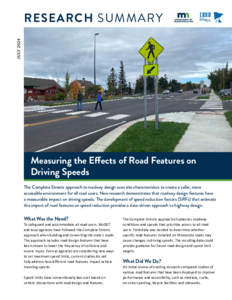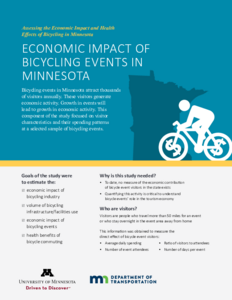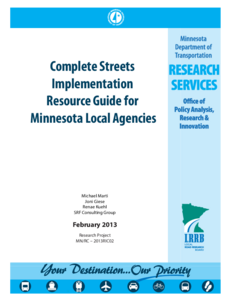Complete Streets Speed Impacts
Creator
Date Created
2024-06
Report Number
2024-13
Description
Economic Impact of Bicycling Events in Minnesota (Handout)
Date Created
2016
Report Number
2016-36H1
Description
Complete Streets Implementation Resource Guide for Minnesota Local Agencies
Date Created
2013
Report Number
2013RIC02
Description
Assessing the Economic Impact and Health Effects of Bicycling in Minnesota
Creator
Date Created
2016
Report Number
2016-36
Description
Complete Streets from Policy to Project: The Planning and Implementation of Complete Streets at Multiple Scales
Date Created
2013
Report Number
2013-30
Description










